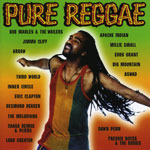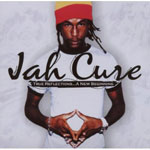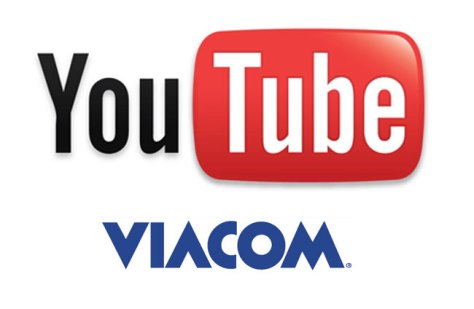If you have a Facebook page for your band, you’re probably aware of many of the applications available for enhancing your page. Some of them provide your fans with an ability to listen to your music, buy your album on iTunes, view upcoming tours, etc. The Reverbnation band app has brought a lot of these features together into one tab, however a newer application called RootMusic is taking that model to the next level.
 RootMusic provides a free Facebook tab that is almost entirely customizable. Think Myspace page, without the html, all in one Facebook application. The app, called “BandPage TM,” makes customizing your page incredible simple; almost anyone can create an awesome page if they have photos and media to upload. The BandPageTM taps into already existing Facebook tools to pull your photos, videos, information and more into the app, and its integration with Facebook allows fans to post your songs directly to their Facebook walls. Basically BandPageTM incorporates all the functionalities you could ever need into the tab, so your fans are never directed outside Facebook unless you want them to be.
RootMusic provides a free Facebook tab that is almost entirely customizable. Think Myspace page, without the html, all in one Facebook application. The app, called “BandPage TM,” makes customizing your page incredible simple; almost anyone can create an awesome page if they have photos and media to upload. The BandPageTM taps into already existing Facebook tools to pull your photos, videos, information and more into the app, and its integration with Facebook allows fans to post your songs directly to their Facebook walls. Basically BandPageTM incorporates all the functionalities you could ever need into the tab, so your fans are never directed outside Facebook unless you want them to be.
This allows bands to direct their audience to one location, rather than spreading their attention to multiple points of reference. “Find us on Facebook” is all you have to say, and that’s all they need to know. They’ll find everything on your page. Other features that stand out include a free mailing list sign-up and “listn.to,” a link-shortener like bit.ly to use on Facebook and Twitter. Speaking of Twitter, you can also hook up with your twitter account and even blast particular Twitter lists if you own the list personally. Soundcloud? Vimeo? YouTube? All of that is integrated as well.
RootMusic combines the sharing power of Facebook with the customizable element that made Myspace so attractive. Pilar Vree, RootMusic Community Manager says, “A few years ago it was pretty difficult to represent yourself professionally on Facebook without spending a bunch of cash. When we first started building RootMusic, MySpace Music was the standard for musicians who wanted to share their music online. But MySpace Music was simply a medium for listening to music; it wasn’t the powerful sharing tool that musicians and fans needed. On Facebook, there was no way that musicians could share their songs, photos, videos, and shows the same way they share links to internet content. So we decided to build an app that would allow musicians to both represent themselves and share their music on the social network that all their fans call their online home: Facebook.”
BandPageTM Basic is already revolutionizing how people share music on Facebook, but BandPageTM Plus takes it even farther. The extended version allows users to create incentives like “Join the mailing list,” “Send a tweet,” or “Like us” in order to unlock exclusive listens or free downloads. The appearance of your BandPageTM Plus can change whether a viewer is a fan or not, and it gives the owner advanced editing features for the page’s appearance that allow you to add fonts, customize headers, and more. Their $1.99/month rate is standard for anyone who uses RootMusic, and all subscribers all have access to the same features. “We believe in helping musicians at every level,” says Pilar Vree, thus it’s no wonder why over 200,000 bands are now using BandPageTM , from your local indie band to artists like Rihanna, Katy Perry, Selena Gomez and more.
 The most exciting part? RootMusic has integrated with TopSpin Media to allow fans to purchase merchandise directly from your BandPageTM. Vree says, “It was something a lot of our users had asked for and this is was first step in that direction. We worked with TopSpin to link into their API and automatically pull users’ store info to the BandPage. Users only need to copy and paste their API key into the store section to add songs, t-shirts and what not to their store on the BandPage.”
The most exciting part? RootMusic has integrated with TopSpin Media to allow fans to purchase merchandise directly from your BandPageTM. Vree says, “It was something a lot of our users had asked for and this is was first step in that direction. We worked with TopSpin to link into their API and automatically pull users’ store info to the BandPage. Users only need to copy and paste their API key into the store section to add songs, t-shirts and what not to their store on the BandPage.”
BandPageTM launched in February of 2010 and by their first anniversary the application claimed 20 million monthly active users. As of June 2011, RootMusic has more than 30 million monthly active users, 1.3 million of which are active daily. We asked RootMusic about the original goal when creating the BandPageTM, Vree told us, “We believed there was a better way to do music online. The Internet is an excellent tool for musicians, but too many musicians are bogged down by the technical rigmarole of coding to know how to maximize its potential. We have already seen the Internet revolutionize the way that music is consumed by listeners, so we knew there were some answers out there for musicians as well. We wanted to create a better way to let musicians interact with their fans, book shows, talk to labels, make money, and connect their music to the people who want to hear their songs.
“We aspire to give musicians the tools they need to optimize their online presence, and our users are the ones who inspire us to make RootMusic better. As our company continues to grow, our users are telling us what they need to succeed in the music industry. They’re always sending us their ideas, and we’re always here to listen and act on them.”
Get to know RootMusic better by watching their product tour video below. If you want to know more, visit www.rootmusic.com.
Photos and video courtesy of RootMusic and TopSpin Media.






















